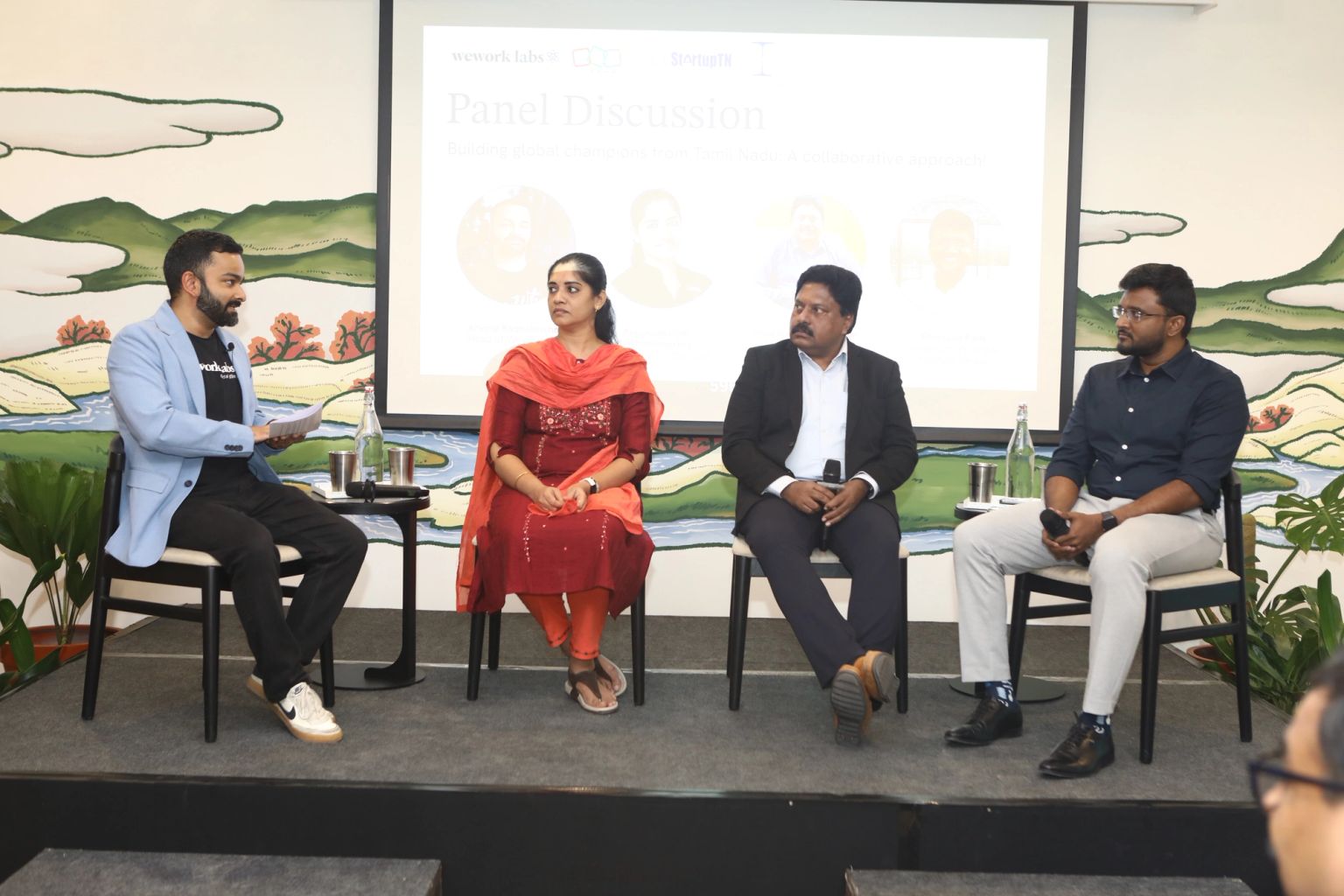WEWORK LABS
The four pillars of India’s $7 trillion economy

Discover the four key pillars driving India’s goal of becoming a $7 trillion economy: Manufacturing, Policy, Agriculture & Services, and Startups & Venture Capital. Read More!
There’s no doubt that we have endured a lot as a country. From being at the pinnacle of global trade to rebuilding our country after regaining it from the clutches of the British, the India we know today is a sum of all of those moments.
So when the finance minister of India Nirmala Sitharaman took to the world’s stage to lay out an ambitious plan to achieve a target of $7 trillion as an economy in three years, everyone was curious about how exactly that would pan out. The government has taken ambitious strides to achieve its goal of becoming a developed country by 2047. For starters, according to the Chief Economic Adviser V Anantha Nageswaran the Union government has built infrastructure at a historically unprecedented rate than before.
Now that the goal was laid out in front of us, we felt like it would be the perfect time to set the context straight. In the latest episode of Upstart, a WeWork India Initiative, Founding Partner and Chief Investment Officer of 3one4 Capital Pranav Pai, sat down with Arvind Radhakrishnan to break down the goals for our audience. Here’s how their discussion played out.
Manufacturing in India
Manufacturing is an essential arm of the Indian economy. In the last 10 years or so, the government has introduced schemes to reduce international dependency on trade. For instance, the Production-Linked Incentive (PLI) Scheme. This government has taken the overall public sector capital investment from ₹5.6 lakh crore in FY15 to ₹18.6 lakh crore in FY24.
The PLI Scheme, launched nearly three years ago, had a clear objective—enhance domestic manufacturing capabilities and generate employment by providing financial incentives based on incremental sales over a specified period. This was particularly in the domains of mobile and allied component manufacturing, electrical component manufacturing, and medical devices.
According to Pranav Pai, for an economy like India, manufacturing should not be seen as the sole driver of growth, but rather as a complement to the strong services sector in India.
Speaking to Arvind Radhakrishnan, Head of WeWork Labs, he said that the focus of manufacturing must lie in driving an export-led manner. This is where schemes like PLI come in handy. “The PLI scheme was important because we finally had a government that said, yeah, it's wrong for us to be importing things we should be making ourselves. Let's fix all of this. They fixed policy on cement, on steel, on auto, and we became really good at a lot of these (sectors).”
Watch the full talk here.
India’s big policy moves
Before we dive into the policies of the reigning government, let’s rewind to the past. India has had a dynamic policy landscape ever since it first gained independence 76 years ago.
Perhaps the most critical was during the reign of Prime Minister Jawaharlal Nehru, who believed that India would benefit greatly from a socialist regime—where the State takes control over key industries to promote economic equality and development. Critics of the decision argue that this decision led to what would become the “License Raj” , a period where the government had stiff control over enterprise moves.
Under this system, businesses in the country required licences to operate. These licences were difficult to get, which led these businesses in-turn offer the government the pejorative term Raj, denoting high levels of corruption and unfair market policies.
Pai, in particular highlights that it’s important to have a bottom-up understanding of India’s strengths and weaknesses and incentivise the country’s private sector to meet the demands of its population. “If you look at what India needs, we have to prioritise an open market that goes global on export services and export manufacturing,” he said. To do this, we would need to reduce the friction associated with regulations like angel tax, for instance.
Now that we understand what needs to be done on a policy level, let's take a quick look into the agriculture pillar, which is most affected by policy.
Watch Pranav Pai’s take on policy moves here.
Agriculture and Services in India
Even in 2024, India is still largely an agriculture-driven country. While the exacting figures vary, according to the Union Home Minister, about 65 crore people are engaged in agriculture.
Yet, according to the Economic Survey, the sector has seen an average annual growth rate of about 5% in the last five years. Most recently, it had a share of 18.2% of the country’s GDP (Gross Domestic Product).
This is where policy intervention will be most pivotal. The government’s view is that with greater private participation, this segment will benefit greatly. From the government’s statement: “Economic Survey calls for enhancing private sector investment in agriculture saying it is vital to provide impetus to the agriculture sector. Investment in technology, production methods, marketing infrastructure, and reduction in post-harvest losses need to be scaled up. A greater focus on post-harvest infrastructure and the development of the food processing sector can reduce wastage/loss and increase the length of storage, ensuring better prices for the farmers.”
So if agriculture, despite having nearly half the population as a workforce, isn't the largest contributor to GDP than which sector is?
The answer? Services.
The services sector is by far the most critical lever to India’s economic growth. It contributed nearly 55% of the total GDP in the fiscal year 2024, marking a significant role in the country's economic landscape. According to the government, an uptick in domestic demand, rapid urbanisation, expansion of e-commerce platforms generated heightened requirements for logistics, and digital related services are important factors which have determined the domestic demand for services.
“Services are like our Lebron James… it’s what is going to make us money for the next 30 years, we need to keep the [the services] industry comfortable,” Pranav Pai explains.
And that brings us to startups and venture capital, our last and arguably most important pillar.
Watch Pranav Pai’s take on the Agriculture and Services economy here.
Startups and venture capital in India
Small but significant, Indian startups collectively contributed about 4% of India’s GDP. According to the Confederation of Indian Industry (CII), Indian startups have the potential to contribute about $1 trillion by 2030. Sectors like retail and e-commerce are likely to lead this from the front. “I'm grateful that I have a chance for a large doubling that not a lot of the older generations who benefited from,” said Pranav Pai.
What are your thoughts on how these pillars will transform our economy? Let us know! See you in the next WeWork Labs blog.
Related Blogs:

WEWORK LABS
It's no surprise that Chennai is emerging as a powerhouse for startups in the country, there is no doubt that the future is looking as bright as the sun reflecting off the Marina Beach. Read all about the city's growth trajectory from the perspective of Kuppulakshmi Krishnamoorthy, the Global Head for Zoho for Startups; Sivarajah Ramanathan, the Mission Director of StartupTN and Dhanush Ram, the Investment Principal at Speciale Invest in this blog.

WEWORK LABS
It’s rare to see a bee-line for an event nearly an hour before it’s about to begin. It’s even rarer to hear the stories of founders who travelled nearly 1,500 kilometres just to attend an event you’re hosting.

WEWORK LABS
For the last couple of years Adithya has been building his startup—Nyaya Nidhi—solving problems in the legal tech space. His is one among several other startups, like Agami arming themselves with an arduous task—to help mitigate the burden on the legal systems at large through efficient technologies at our disposal.
